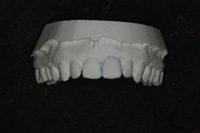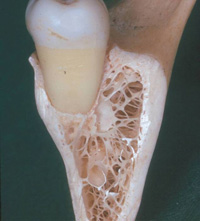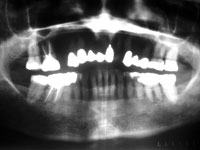When you opened your practice it was probably difficult to imagine you could ever have too many patients or be too busy. At the time, the goal was just to fill the day. My, how things have changed. Today, many practitioners are suffocating under the crush of burgeoning patient rolls. They are slogging their way through backbreaking schedules that make an 8-hour day and a 4-day workweek sound like the stuff of fairy tales.
Here’s the reason: We are 10 years into a shortage of dentists. Since 1995, more dentists have died or retired than new dentists entering the profession. Numerous dental schools have closed, and many of those operating are struggling to maintain current funding levels and staffing quotas. It’s a far cry from the 1980s when a dentist’s shingle punctuated nearly every block on the street. Marketing was “in,” and the push for patients meant freebies, special offers, and advertising. The focus was on getting patients in the door, and hopefully they would come back for more.
Now it’s 2005 and the picture is much different. Open the schedule in just about any “successful” practice and you’ll likely find patients booked out for weeks and even months. Line up the names of those on the cancellation roster and the list will paper the walls. The good news—patients are seeking more dental care. They have higher expectations. They’ve seen the possibilities and are eager to explore the options. The bad news—doctors and teams are clawing frantically through their days trying to keep up with demand while patients wait weeks or even months for procedures they need and/or want. Welcome to the era of uncontrolled growth.
HEED THE WARNINGS
With all those attempts at staying busy, you would think doctors would be on their way to a cushy early retirement compliments of today’s production. Sadly, exploding practices often are financial duds; although teams are racing through the days, production is at a crawl. The reason? There are several, but chief among them are clinical inefficiency and scheduling just to fill time.
First, the schedule. It is out of control and screaming trouble. But you have to pause long enough to hear the warning cries. This is what they sound like:
- The doctor is booked more than 3 weeks out, and patients have to wait several weeks for even the most routine procedures.
- There is little consistency, if any, in the time booked for procedures—30, 60, 90 minutes.
- The objective is simply to keep the schedule full—just stick patients anywhere.
- The hygiene schedule is loaded up for months.
- Lunch hour is a nice euphemism for food-on-the-fly lunch breaks that give the team 10 minutes to catch their breaths and gulp their power shakes.
- Patient retention is weak.
- Worst of all, revenues are flat.
Any of this ring a bell?
Too often, those who manage the schedule are given one directive: Keep the doctor busy. Beyond that, they are on their own, and you are left to race the hallways, be in 2 places—sometimes 3—at once, skip lunch, and remain calm at all times. By 6 PM you’re ready to collapse in a heap. It’s time to tell your scheduling coordinator that you do not want to be busy, you want to be productive—big difference, and it goes to the heart of controlling growth while increasing profits.
The doctor needs to be scheduled to meet production objectives, not endurance goals. For example, perhaps your goal (set a reasonable one if you haven’t) is to break $700,000 in clinical production. This calculates to $14,583 per week (taking 4 weeks out for vacation). Working 40 hours per week means you’ll need to produce about $364 per hour. If you want to work fewer hours, then obviously per-hour production will need to be higher.
A crown charged out at $900, which takes 2 appointments for a total of 2 hours, exceeds the per-hour production goal by $86. This excess can be applied to any shortfall caused by smaller-ticket procedures. Use the formula below to determine the rate of hourly production.
(1) The assistant logs the amount of time it takes to perform specific procedures. If the procedure takes the doctor 3 appointments, the assistant should record the time needed for all 3 appointments.
(2) Next, record the total fee for the procedure.
(3) Determine the procedure value per hourly goal. To do this, take the cost of the procedure, for example $900, and divide it by the total time to perform the procedure (120 minutes). That will give you your production-per-minute value: $7.50. Multiply that by 60 minutes to calculate the procedure value per hour ($450).
(4) Compare that amount to the doctor’s hourly production goal. It must equal or exceed the identified goal.
If you choose to block the schedule for specific procedures, do so based on historical data—actual procedures performed over the past 6 months—and not on wishful thinking. Start scheduling to achieve production objectives rather than survival tests.
ESTABLISHING ORDER FROM CHAOS
The next step in establishing order from chaos requires you look within the operatory. Rarely do dentists and their teams step back and examine the details of what’s driving the busyness. Most practices never consider anything but the obvious: “We’re too busy. We need more people to handle it.” Certainly, demands on dental practices are increasing significantly, and while clinical quality can never be compromised, clinical efficiency can almost always be enhanced.
Think about what’s happening in the operatory and answer the following questions honestly:
•Does your assistant anticipate which instrument you need next?
•Must you repeatedly stop to adjust the light source?
•Can your assistant see clearly what is happening in the patient’s mouth?
•Have you given your assistant the responsibilities she is legally allowed to perform in your state?
•Are you performing procedures or explaining matters to patients that the assistant or other staff members could and should be handling? For example, do you explain post-op care to patients even though that’s the assistant’s job? Or do you frequently sit down with parents to discuss the importance of sealants even though this is the hygienist’s responsibility?
These are patterns of inefficiency that are etched into work habits early on as newer dentists emerge from dental school with little or no training in how to use a dental assistant effectively. Consequently, dentist and assistant fall into a system of performing procedures inefficiently day after day, establishing poor work habits that become second nature and so much a part of the routine they are almost never considered for improvement.
The result is that all of those seemingly minor inefficiencies add up to minutes, hours, and days lost in your schedule. What’s worse, you may even be considering hiring an associate. Too often, the too-busy dentist will bring in an associate, thinking profits will increase and he or she can decrease his or her own time in the practice. It’s a rude awakening when the senior doctor finds he or she cannot keep that associate busy. The senior doctor has been in a state of perpetual busyness because the practice is inefficient, not because the demand for dentistry is too large to handle.
Surprisingly, significantly improving chairside efficiency often requires minimal change. Typically, the dental assistant who isn’t adjusting the light source or isn’t anticipating the doctor’s instrument needs is likely not sitting in the chair properly. The assistant must be one head higher than the dentist, and there should be a hydraulic lift on the chair so she can see into the mouth.
Meanwhile, dentists, legendary perfectionists that they are, can severely undermine their own clinical efficiency. A dentist may change burs 5 times during one procedure. Every change increases the time necessary to complete the procedure. Then there is the matter of delegation. If you feel you are run ragged day after day, take a good look at the tasks you are performing that should be the responsibility of other team members.
Dentists must delegate every procedure, patient interaction, and staff matter legally allowable in their state. For example, most states allow dental assistants to remove a temporary crown, clean the tooth, and try-in the permanent crown. However, often the dentist is performing these procedures, which is clinically inefficient. Sealants provide an even clearer example of a procedure that should be delegated completely to the hygienist. If you are concerned about a staff member performing the procedures to your satisfaction, then train him or her. If the staff member doesn’t respond to training, then it’s time to hire someone who will.
CONCLUSION
Too tired, too stressed, and just too busy to enjoy dentistry? Turn it around by implementing a productive scheduling system and maximizing clinical efficiency. Minor changes in those areas can go a long way in creating major improvements in the delivery of patient care as well as the overall satisfaction of your work. I guarantee it.
Ms. McKenzie, certified management consultant, is a nationally known lecturer, author, and consultant to the Council on Dental Practice of the ADA. She is president and CEO of McKenzie Management, which provides on-site analysis of the business, clinical, and hygiene departments, and has offered a full line of educational management products throughout the United States for the past 25 years. She is also founder of The Center for Dental Career Development, which provides advanced dental business education to front office business employees, dentists/office managers, and team retreats, and offers online training courses through dentalcareerdevelop.com. To receive Ms. McKenzie’s free e-management newsletter, e-mail sallymck@mckenziemgmt.com or visit mckenziemgmt.com.











